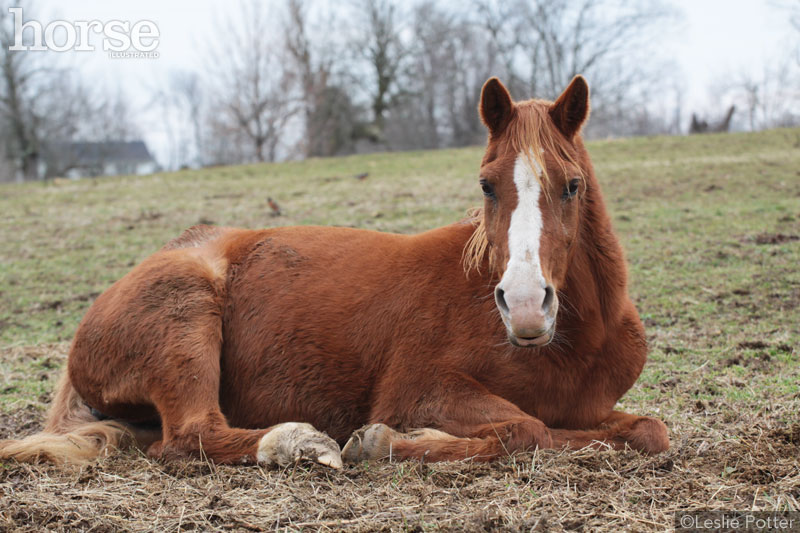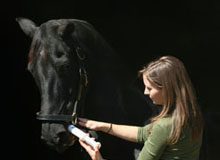
Q: I have a mare that has rubbed spots on her hocks and on the front of her fetlocks. Sometimes they bleed and I have to doctor them. They go away for a while but keep coming back. She lives part of the time in a stall and part of the time in the pasture. Is there a way to prevent this?
If you think about the way a horse lies on the ground, then you can visualize how such abrasions occur in those particular places: The front feet tuck under the chest with the front of the fetlocks and the underside of the hind leg, especially the hock, in contact with the ground.
A horse’s lower leg has very thin skin covering it, so any superficial abrasion that continually recurs is likely to create a rub or wound. Initially, there may simply be loss of hair, but as time goes on, the skin becomes abraded to the point of scabs and sores in those locations. It’s possible—although very uncommon—for these persistent wounds to progress into deeper tissues to set up a serious infection, which is particularly concerning when it’s over or near a joint.
Abrasions like you describe on the front of the fetlocks may also occur when a horse experiences episodes of narcolepsy, a condition that causes him to fall asleep on his feet at inappropriate times. The horse’s legs may buckle and he often catches himself with the front of the fetlocks. Over time, wounds and scabs develop, often in both fetlocks. You can monitor your horse for narcolepsy by watching him in non-stimulating situations to see if he falls asleep enough to almost fall; this commonly occurs when tied up in the barn aisle to be groomed.
For fetlock wounds, some horse owners use upturned bell boots, but these don’t cover the ankle fully. Others spray the wounds with aluminum spray, which is helpful to keep flies from pestering the sores. Another solution is to apply topical antibiotic ointment and a non-stick pad, which is then covered with a light Elastikon bandage layer. While this protects the area, the bandage needs to be changed regularly. This isn’t a particularly good tactic to use on the hocks because bandaging that area can be tricky at best.
Equine supply companies have addressed this need with commercially available neoprene boots. There are various designs that fit comfortably over either the fetlock or hock. Your horse can wear his neoprene boots regularly, although they should be checked daily to make sure they are free of debris. If you can figure out which stabling surface is causing the irritation, then you need only apply the boots when the horse is stabled in that situation.
NANCY S. LOVING, DVM, is a performance horse veterinarian based in Boulder, Colo., and is the author of All Horse Systems Go.
This article originally appeared in the April 2015 issue of Horse Illustrated magazine. Click here to subscribe!






I should feel lucky that my horses do not have these type of sores.
My old guy has one and it is worse in the summer with the flys, yesterday it swollen and he was sore and didn’t want to put pressure on his foot. I have had two different vets look at it and they just give me cream. I have hosed it off and sprayed hydrogen peroxide on it, and put the silver spray on it. How do i know if it is infected?